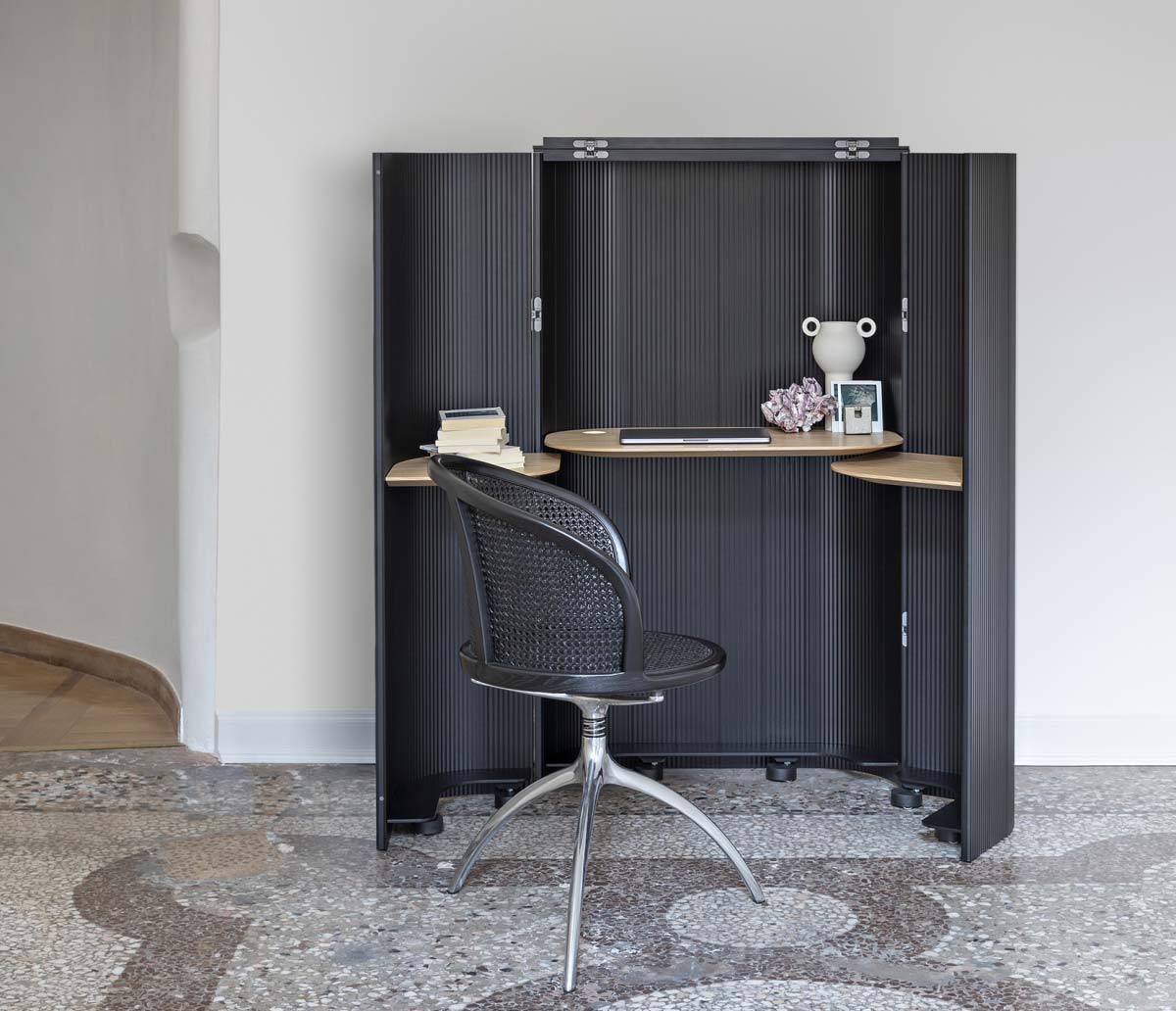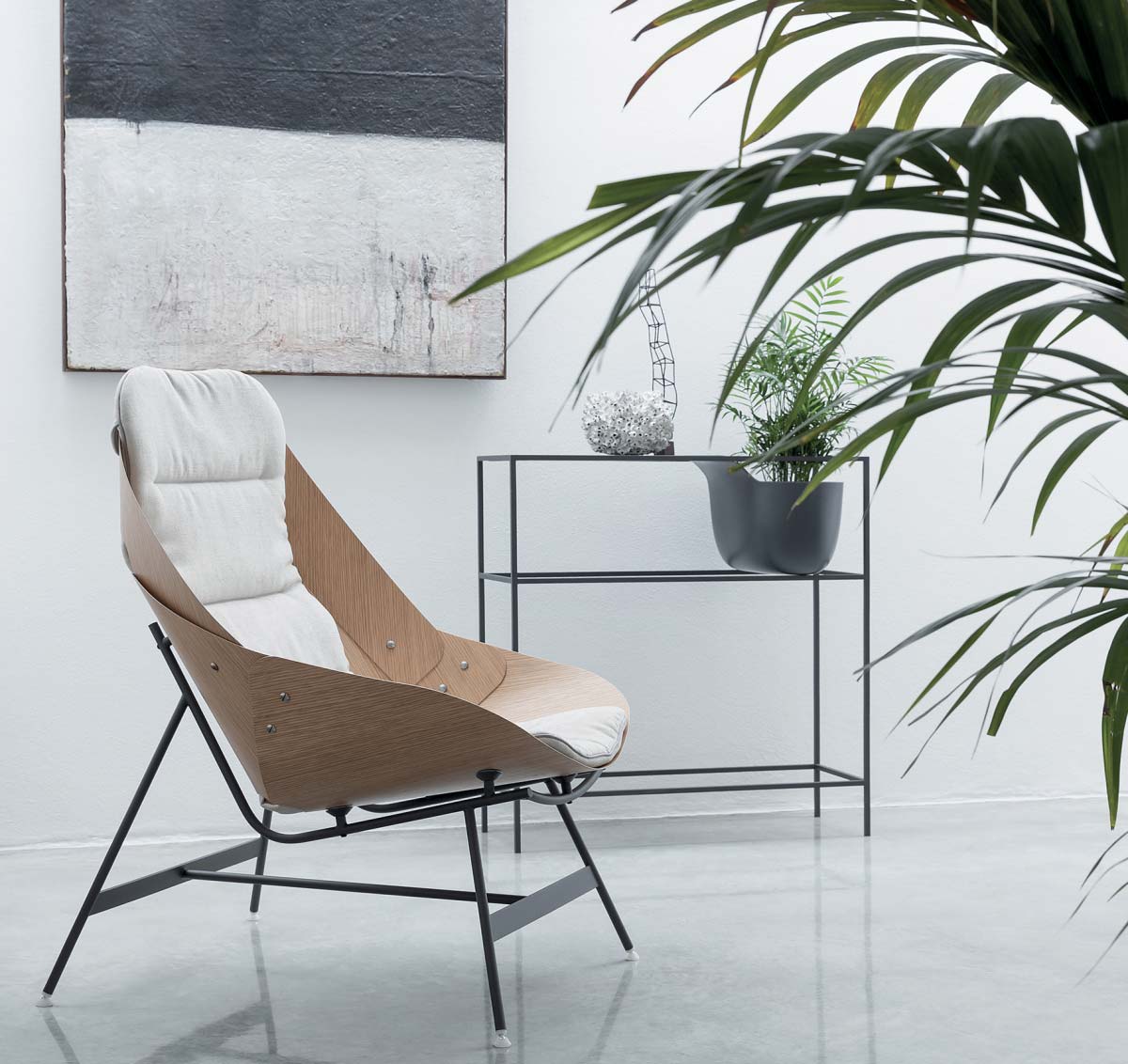Always the same, never equal: this is Alias, the exponent of a profound design where technology and research are the pivots, embodying the inspiration that leads to change and the courage required to push the ‘on’ button. The brand director Andrea Sanguineti takes stock of the first 40 years during which the company has grown and taken new risks, often ahead of the market, building its intriguing identity.
Forty years: what sort of birthday will this be?
We have stopped time, to understand where we come from and where we are going. At the Salone, with a certain understatement, we illustrated our path with a wall that narrated the early days (Magistretti and the Spaghetti by Belotti) all the way to the present, with the latest pieces by Patrick Norguet. The result of this itinerary reveals an Alias that has always sought designers that are very different from each other, with whom to explore various approaches to the creation of products.
Meda, Botta, Rizzatto and Carlo Forcolini are the names that have shaped the Alias DNA, all with unique traits: this is what we still want for our company, this curiosity and talent for experimentation.

Experimentation was certainly on display at the Alias booth…
This year we came to grips with the theme of wood, a very contemporary material, a bit distant from our past history (apart from Laleggera by Riccardo Blumer, which won the Compasso d’Oro in 1998 and is on view at MoMA New York). We called in Atelier Oï (having experience with Artemide, Foscarini and Louis Vuitton), a team of Swiss designers we had already had an eye on for some time, with the ability to start with a component in order to obtain geometric forms. Their approach is very oriental, inspired by Japanese architecture, and starts with a material to create a form: the result is the seating collection “E la nave va,” a name that links back to Armand Louis – one of the partners of the Atelier – who has constructed boats for years. Wood is used here not just as a structural part, but as an elastic element that creates the comfort of the seat. The final result is a soft, welcoming object, on which we have placed simple cushions as the finishing touch.
At first glance the new collection was quite surprising…
We do not set out to astonish, but we always take risks, moving forward with the research. “E la nave va” was a very complex path; we did it in the Veneto, with a supplier specialized in curved wood, and in practice the project was completed by three players: us, the designers and the makers. It takes a certain amount of luck, but to some extent you make your own luck, so we were expecting to win some awards with this and other products.

And they did indeed arrive…
Yes, we won a German Design Award with the Gran Kobi Essentiel by Patrick Norguet, an honorable mention with the Okome Bed by Nendo and the Time chair by Alfredo Häberli, and the Stylepark Selected Award. In the case of Time by Häberli, wood and technology meet and produce innovation: a sandwich of fiberglass bonded with wood veneer, resulting in a sheet that is cut by laser and shaped by hand, taking on its three-dimensional form. As far as I know, no other seats exist that are produced in this way: it took two years and a company specializing in skis to develop it, to obtain that sheet that is folded by hand, but also has the strength to support a seated human being.
Six months have passed since Orgatec; are other ‘WeWork’ type changes in the offing?
For several years now Alias has understood that its design approach can also be suited to the world of the so-called non-office office, the more informal kind. In 2016 we presented collections that were crossovers between home and workplace. Orgatec 2018 confirmed this trend, and the timeliness of the directions taken by Alias.
For the first time, we have developed tables for the office, though with domestic characteristics, combined – importantly – with the technical and ergonomic factors required for workspaces. Alias continues to have two very different catalogues for home and office, involving different types of creativity and different names: at times the products are the same, but the context and the settings make them – in other words, ‘Alias’ – different.







